
|
Penguins are never anything less than fascinating, and their odd, quirky ways have interested humans since they were first discovered (and described as 'geese' by European voyagers) in the 16th century. They are one of nature's great survivors - living in the icy climes of Antarctica and the Sub-antarctic, often in huge colonies crammed full of mating pairs and young families. Enjoy these beautiful photos of penguins, while learning more about these fascinating birds via the information provided. There is a bonus video at the end too, which shows them at their hilarious best! |
|
King Penguins in the snow on South Georgia. |
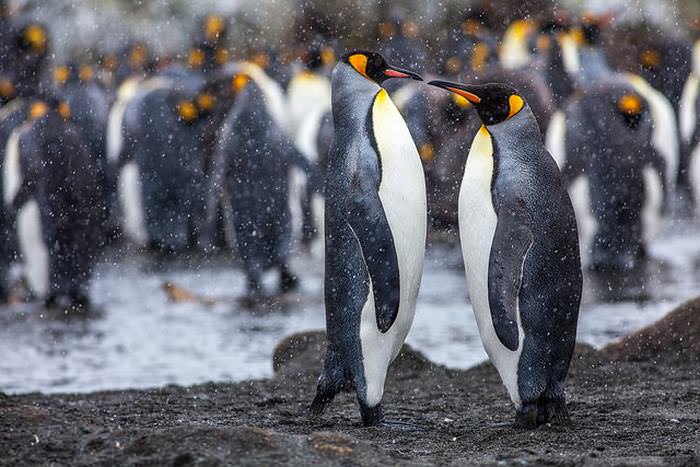 |
| Image: Flickr user Anne Dirske |
|
|
|
Rockhopper Penguin, one of the smallest penguin breeds. |
 |
| Image: Flickr user Pablo Fernicola |
|
People often think of the iconic markings of the emperor and king penguin when thinking about the species, but there are actually over 17 classifications of the bird in total - and they come in all sorts of shapes and markings. There are behavioral differences between the various types, although they all eat fish and hunt at sea. |
|
Fluffy, plump emperor penguin chicks, carefully watched by an adult. |
 |
| Image: Flickr user Martha de Jong-Lantink |
|
The beautifully patterned chinstrap penguin, one of only two penguin species to have a white face. |
 |
| Image: Flickr user Christopher Michel |
|
Many live in colonies out in the open, but some smaller penguins nest in burrows or undergrowth. Young penguins are born with a covering of down, which they shed as they reach adulthood. |
|
An emperor penguin family. Penguins are very family oriented birds. |
 |
| Image: Flickr user Christopher Michel |
|
Emperor penguins head off into the icy waters of Antarctica. |
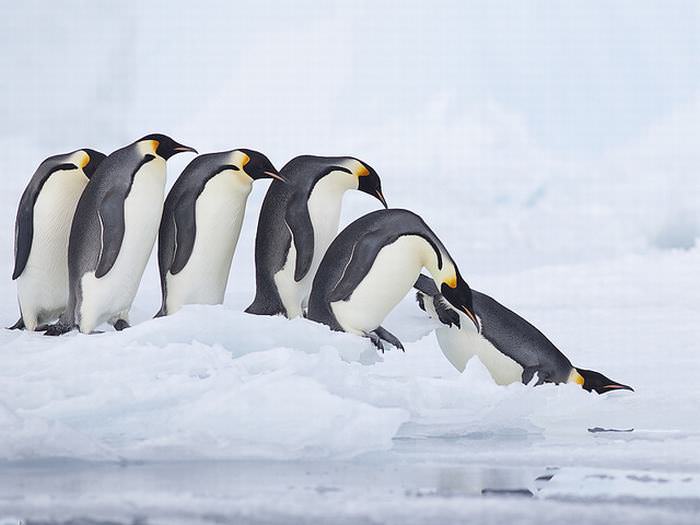 |
| Image: Flickr user StormPetrel1 |
|
Penguins are only found in the southern hemisphere, with huge colonies across Antarctica, and a distribution that spreads north into South America, Australia, New Zealand etc. They are believed to be exclusive to the south because it allows them to avoid land based predators like polar bears and wolves, animals that would find them cumbersome, flabby targets and easy and wholesome prey. They are a food source for many aquatic predators as well, but their excellent speed while swimming gives them a much better chance of avoiding a grizzly fate than they have on land. |
|
All penguin species are excellent swimmers. |
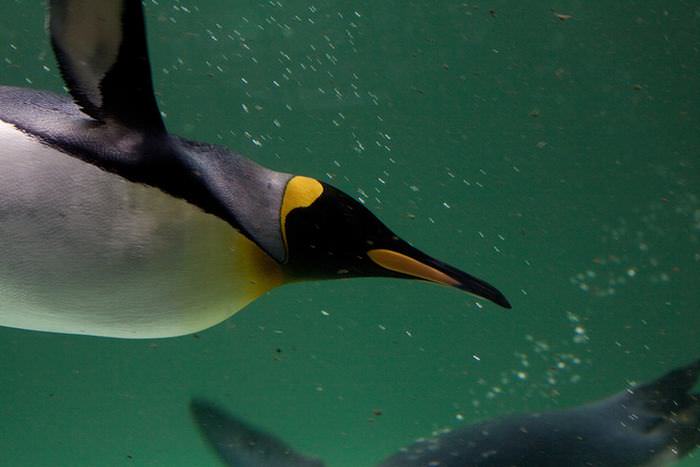 |
| Image: Flickr user Dave Scriven |
|
A gentoo penguin mother and child pairing. |
 |
| Image: Flickr user Liam Quinn |
|
The largest penguin in the world is the emperor penguin, which can stand up to 4 feet (1.2 meters tall) while the smallest is the undeniably cute little blue penguin, found in New Zealand and Australia. Little blue penguins grow no taller than 16 inches (40cm) but are curious creatures and will often approach humans. In areas of New Zealand, you can watch blue penguins return en masse from a day's fishing to their chirping chicks late at night - a truly magical experience. |
|
Little blue penguins are found on the coastlines of New Zealand and Australia. |
 |
| Image: Flickr user Daniel Pietzsch |
|
Immature penguins shedding their down as they reach adulthood. |
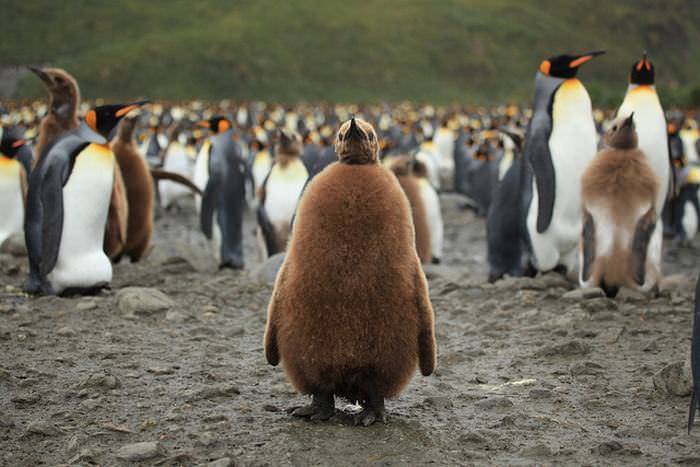 |
| Image: Flickr user Liam Quinn |
|
Other notable penguin sub-species include the gentoo - the world's quickest penguin, capable of swimming at speeds of up to 22mph (35kph); the shy but beautiful yellow-eyed penguin, which is the rarest in the world; and the jackass penguin - the only penguin to be found in Africa. Jackass penguins have special adaptations that allow them to control blood supply to special glands above their eyes. These glands help them regulate their temperature during hotter periods, so that they can cope in a warmer climate. |
|
A yellow-eyed penguin, the rarest species of penguin in the world. |
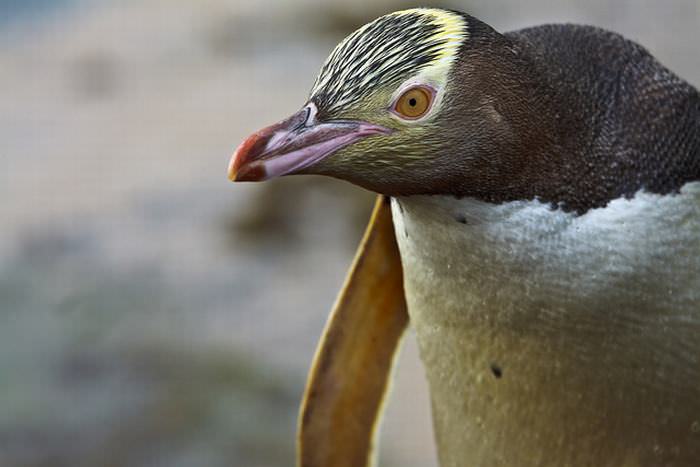 |
| Image: Flickr user Michael Dawes |
|
A jackass penguin raising its wings on a South African beach. |
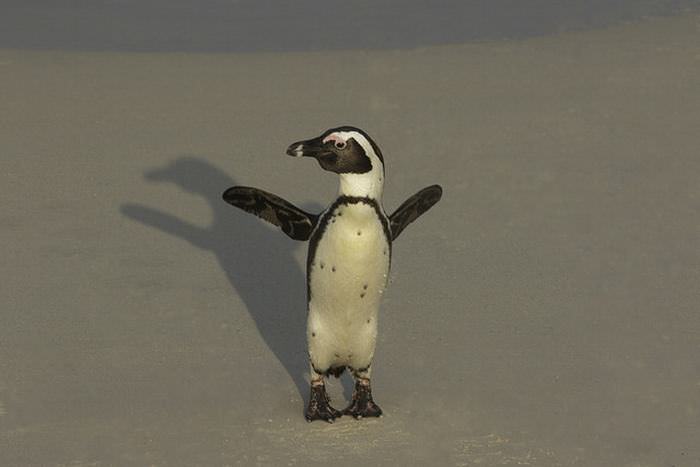 |
| Image: Flickr user Gregory Smith |
|
All penguins display predominantly black and white coloring. This helps them stay camouflaged in the water, as the black is difficult to see in dark waters from above, while the white looks like light reflecting off the water if viewed from below. |
|
The distinctive brow of the wonderfully named Macaroni Penguin. |
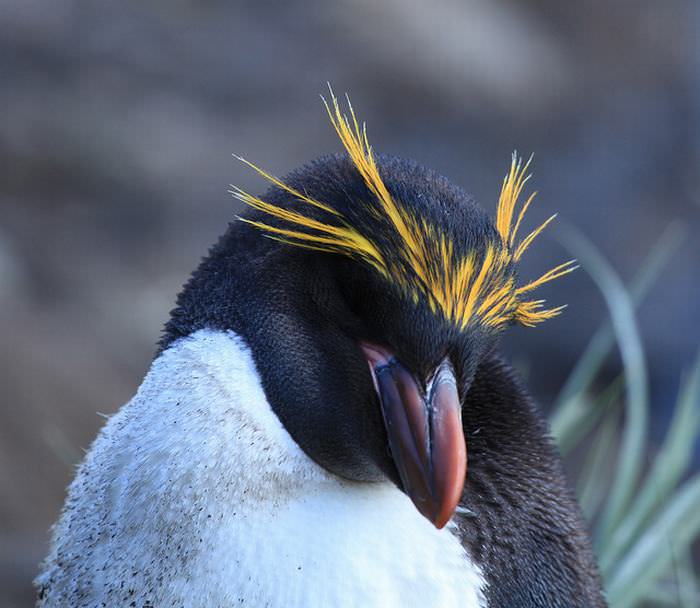 |
| Image: Flickr user Liam Quinn |
|
A huge sea of king penguins extend up a grassy hill in South Georgia. |
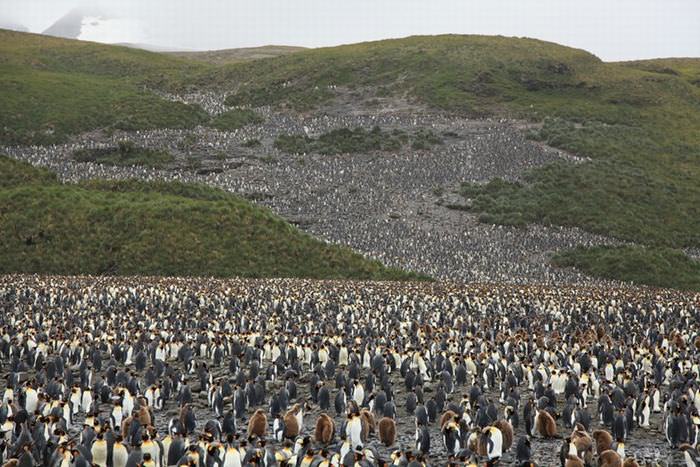 |
| Image: arkinspace.com |
|
All but two species of penguin live in huge colonies that provide one of nature's most wondrous sights. There can be well over a thousand birds in these masses, which become gigantic creches during the day, when the adults go out to fish. Although they have no visible ears, penguins have excellent hearing skills, so they can distinguish the call of their young when they return home and start searching through the crowds. |
|
One of nature's greatest crowd scenes. |
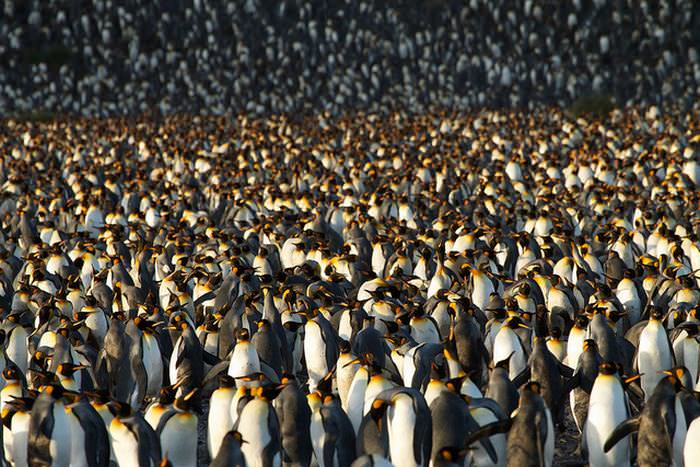 |
| Image: Flickr user Brian Gratwicke |
| Of course, a lot of the time, penguins are just hilarious, or cute (or both) - as these short videos prove: |
| Young penguins learning to walk on ice... |